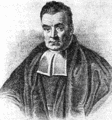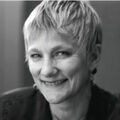Template:Selected anniversaries/April 6: Difference between revisions
No edit summary |
No edit summary |
||
| Line 13: | Line 13: | ||
File:Supplice de 9 émigrés Octobre 1793.jpg|link=French Revolution (nonfiction)|1793: During the [[French Revolution (nonfiction)|French Revolution]], the Committee of Public Safety becomes the executive organ of the republic. | File:Supplice de 9 émigrés Octobre 1793.jpg|link=French Revolution (nonfiction)|1793: During the [[French Revolution (nonfiction)|French Revolution]], the Committee of Public Safety becomes the executive organ of the republic. | ||
||1801: William Miller born ... mineralogist and laid the foundations of modern crystallography. Miller indices are named after him, the method having been described in his ''Treatise on Crystallography'' (1839). Pic search | ||1801: William Miller born ... mineralogist and laid the foundations of modern crystallography. Miller indices are named after him, the method having been described in his ''Treatise on Crystallography'' (1839). Pic search. | ||
||1810: Philip Henry Gosse born ... biologist and academic ... Aquaria. Pic. | ||1810: Philip Henry Gosse born ... biologist and academic ... Aquaria. Pic. | ||
| Line 31: | Line 31: | ||
File:Pieter Rijke.jpg|link=Pieter Rijke (nonfiction)|1889: Physicist and crime-fighter [[Pieter Rijke (nonfiction)|Petrus Leonardus Rijke]] invents the Rijke tube, which neutralizes [[Crimes against physical constants|crimes against audio constants]] by creating a self-quantumizing standing wave. | File:Pieter Rijke.jpg|link=Pieter Rijke (nonfiction)|1889: Physicist and crime-fighter [[Pieter Rijke (nonfiction)|Petrus Leonardus Rijke]] invents the Rijke tube, which neutralizes [[Crimes against physical constants|crimes against audio constants]] by creating a self-quantumizing standing wave. | ||
||1890: André-Louis Danjon born ... astronomer who devised a now standard five-point scale for rating the darkness and colour of a total lunar eclipse, which is known as the Danjon Luminosity Scale. He studied Earth's rotation, and developed astronomical instruments, including a photometer to measure Earthshine - the brightness of a dark moon due to light reflected from Earth. It consisted of a telescope in which a prism split the Moon's image into two identical side-by-side images. By adjusting a diaphragm to dim one of the images until the sunlit portion had the same apparent brightness as the earthlit portion on the unadjusted image, he could quantify the diaphragm adjustment, and thus had a real measurement for the brightness of Earthshine.*TIS Pic search | ||1890: André-Louis Danjon born ... astronomer who devised a now standard five-point scale for rating the darkness and colour of a total lunar eclipse, which is known as the Danjon Luminosity Scale. He studied Earth's rotation, and developed astronomical instruments, including a photometer to measure Earthshine - the brightness of a dark moon due to light reflected from Earth. It consisted of a telescope in which a prism split the Moon's image into two identical side-by-side images. By adjusting a diaphragm to dim one of the images until the sunlit portion had the same apparent brightness as the earthlit portion on the unadjusted image, he could quantify the diaphragm adjustment, and thus had a real measurement for the brightness of Earthshine.*TIS Pic search. | ||
||1890: Anthony Fokker born ... engineer and businessman, founded Fokker Aircraft Manufacturer. Pic. | ||1890: Anthony Fokker born ... engineer and businessman, founded Fokker Aircraft Manufacturer. Pic. | ||
| Line 45: | Line 45: | ||
||1913: Adolf Slaby dies ... electronics pioneer. Pic. | ||1913: Adolf Slaby dies ... electronics pioneer. Pic. | ||
||1913: Otto Schmitt born ... inventor, engineer, and biophysicist known for his scientific contributions to biophysics and for establishing the field of biomedical engineering. Schmitt also coined the term biomimetics and invented the Schmitt trigger, the cathode follower, the differential amplifier, and the chopper-stabilized amplifier. Pic search | ||1913: Otto Schmitt born ... inventor, engineer, and biophysicist known for his scientific contributions to biophysics and for establishing the field of biomedical engineering. Schmitt also coined the term biomimetics and invented the Schmitt trigger, the cathode follower, the differential amplifier, and the chopper-stabilized amplifier. Pic search. | ||
||1920: Julius Elster dies ... teacher and physicist. He and Hans Friedrich Geitel invented the photocell. Pic search | ||1920: Julius Elster dies ... teacher and physicist. He and Hans Friedrich Geitel invented the photocell. Pic search. | ||
||1920: Jack Cover born ... pilot and physicist, invented the Taser gun. Pic. | ||1920: Jack Cover born ... pilot and physicist, invented the Taser gun. Pic. | ||
| Line 85: | Line 85: | ||
||1998: Pakistan tests medium-range missiles capable of reaching India. | ||1998: Pakistan tests medium-range missiles capable of reaching India. | ||
File:Anita Borg.jpg|link=Anita Borg (nonfiction)|2003: Computer scientist [[Anita Borg (nonfiction)|Anita Borg]] dies. Borg founded Anita Borg Institute for Women and Technology. | File:Anita Borg.jpg|link=Anita Borg (nonfiction)|2003: Computer scientist [[Anita Borg (nonfiction)|Anita Borg]] dies. Borg founded the Anita Borg Institute for Women and Technology. | ||
||2004: Alexander Yakovlevich Lerner dies ... scientist and Soviet refusenik. Cybernetics. Pic: https://ru.wikipedia.org/wiki/%D0%9B%D0%B5%D1%80%D0%BD%D0%B5%D1%80,_%D0%90%D0%BB%D0%B5%D0%BA%D1%81%D0%B0%D0%BD%D0%B4%D1%80_%D0%AF%D0%BA%D0%BE%D0%B2%D0%BB%D0%B5%D0%B2%D0%B8%D1%87 | ||2004: Alexander Yakovlevich Lerner dies ... scientist and Soviet refusenik. Cybernetics. Pic: https://ru.wikipedia.org/wiki/%D0%9B%D0%B5%D1%80%D0%BD%D0%B5%D1%80,_%D0%90%D0%BB%D0%B5%D0%BA%D1%81%D0%B0%D0%BD%D0%B4%D1%80_%D0%AF%D0%BA%D0%BE%D0%B2%D0%BB%D0%B5%D0%B2%D0%B8%D1%87 | ||
Revision as of 05:07, 6 April 2021
1528: Painter, engraver, and mathematician Albrecht Dürer dies. Dürer is regarded as the greatest German Renaissance artist: his vast body of work will include altarpieces and religious works, numerous portraits and self-portraits, and copper engravings.
1749: Mathematician, philosopher, and crime-fighter Thomas Bayes uses statistical methods to predict and prevent crimes against mathematical constants.
1793: During the French Revolution, the Committee of Public Safety becomes the executive organ of the republic.
1829: Mathematician and theorist Niels Henrik Abel dies. Abel made pioneering contributions in a variety of fields, including the discovery of Abelian functions, and the first complete proof demonstrating the impossibility of solving the general quintic equation in radicals.
1889: Physicist and crime-fighter Petrus Leonardus Rijke invents the Rijke tube, which neutralizes crimes against audio constants by creating a self-quantumizing standing wave.
1926: American comic book artist Gil Kane born. Kane will pioneer graphic novels with his books His Name is...Savage (1968) and Blackmark (1971).
1992: Writer Isaac Asimov dies. Asimov is one of the "Big Three" science fiction writers of his generation.
2003: Computer scientist Anita Borg dies. Borg founded the Anita Borg Institute for Women and Technology.
2016: Robot 7 voted Picture of the Day by the citizens of New Minneapolis, Canada.








